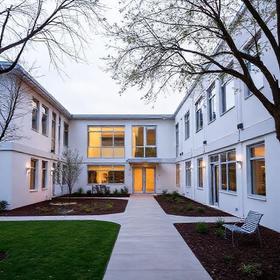Pros & Cons of Boarding School Education in 2025
Boarding schools remain a powerful educational option into 2025, but like any model, they carry distinct advantages and trade-offs. For parents, students, and educators weighing this path, here is a balanced, up-to-date analysis of the most relevant pros and cons of boarding school education in today’s landscape.
Pros 1. Immersive Academic Environment
Boarding schools offer a 24/7 learning culture that extends far beyond classroom hours. Students often benefit from evening study halls, tutoring, and faculty engagement outside class. As of 2025, many schools integrate advanced curricula — including AI ethics, project-based learning, and digital collaboration — to prepare students for future challenges. Boarding School Review+2Boarding School Review+2
This kind of immersion can boost academic growth, help students master complex subjects, and build habits of intellectual curiosity.
2. Character and Independence Development
Living away from home encourages students to manage time, responsibilities, and peer relationships. Boarding life builds maturity, self-reliance, and social-emotional skills.
Residential roles like dorm leadership, mentorship, and community duties offer practical training in leadership and collaboration.
3. Close-Knit Peer Community & Networking
When classmates are also dorm mates, students form strong, lasting bonds. These friendships can underpin support systems not only through high school but into college and beyond.
Boarding schools frequently maintain alumni networks, amplifying opportunities for mentorship, internships, and career support.
4. Global Diversity & Cultural Exposure
Boarding campuses often attract students from a wide array of geographic, socioeconomic, and cultural backgrounds.
In 2025, this kind of cross-cultural interaction remains a strength, helping students build empathy, global awareness, and cultural competence.
5. Enhanced College & Long-Term Outcomes
Historically, boarding school graduates matriculate to selective colleges at higher rates, and many go on to earn advanced degrees.
While part of this advantage may reflect the type of students who choose boarding in the first place, more schools now publish college placement data and outcome metrics, giving families clearer insight into return on investment.
6. Access to Specialized Programs
Because boarding schools can sustain rich campus life, they often support niche or intensive programs: IB (International Baccalaureate), STEM research labs, global travel, performing arts, sustainability initiatives, and more.
These unique offerings may be harder to maintain in non-residential schools, making boarding a compelling choice for students with specialized interests.
7. Growing Institutional Support & Innovation
In 2025, many boarding schools are investing significantly in mental health, wellness infrastructure, and sustainable campus operations.
Some schools are also rethinking digital life — for instance, limiting smartphone usage in the dorm and encouraging in-person social interaction.
On the financial side, more schools are expanding equitable access through aid: a few even cap tuition as a percentage of family income.
Cons 1. High Cost & Financial Burden
One of the most significant challenges is the cost. Full boarding tuition in many U.S. schools now ranges between $60,000 – $80,000 per year as of 2025.
Beyond tuition, families must consider travel, personal expenses, health coverage, technology, and other "hidden" costs.
Even with financial aid, the net cost can remain prohibitive; not all families will qualify for generous aid programs.
2. Homesickness & Emotional Strain
Separation from family can be emotionally challenging, especially for younger students or those unaccustomed to living away from home. VIOLET GLENTON
Some students may experience what critics call “boarding school syndrome”: anxiety, identity stress, or a sense of dislocation. Boarding School Review
While many schools now provide counseling, peer mentoring, and wellness supports, the emotional adjustment remains a real concern.
3. Reduced Daily Family Connection
Boarding students do not share daily routines with family — no evening dinners, weekend routines, or spontaneous sibling interactions.
For some families, that loss of regular connection can be difficult, and students may find reintegration in holidays or returning home more challenging.
4. Pressure & Intensity of Boarding Culture
Boarding environments often emphasize high achievement — academically, socially, and extracurricularly. Boarding School Review
This pressure can lead to burnout, stress, or mental health challenges, especially if not mitigated by strong support systems. Competition, perfectionism, or overcommitment can be intensified in such immersive environments.
5. Adjusting to Institutional Life & Fit
Not every student thrives in a structured, residential setting. Some may prefer a more flexible or family-oriented day school environment.
Transitioning to dorm life can be difficult: homesickness, social adjustment, or conflicts in communal living are common early hurdles.
And for certain students, the uniformity of boarding school rules and expectations may feel restrictive.
6. Sustainability & Operational Challenges
Maintaining a boarding campus is operationally intensive. In 2025, schools face rising costs around infrastructure upgrades, sustainability (e.g., green buildings, smart campus), and staffing (residential advisers, night supervisors, wellness professionals).
Lower-enrollment boarding programmes, especially in rural or less affluent areas, are under financial stress, which can affect program quality.
7. Equity and Access Issues
While financial aid is improving, boarding school remains inaccessible to many families. Perceptions of elitism persist, and some campuses struggle with diversity and inclusion in their residential communities. Moreover, families may face rigid boarding calendars, limited flexibility for emergencies, and constraints on visiting or travel.
Real-World Example & Expert Insight
Consider Rumsey Hall School, a junior boarding school in Connecticut: for the 2025–26 academic year, its boarding tuition is approximately $82,500.
This figure illustrates how premium residential programs remain, even for younger students.
Dr. Elaine Carter, an education researcher at Georgetown University, captures the intangible value of boarding schooling:
“Boarding schools offer more than academics — they cultivate the kind of maturity and adaptability that today’s fast-changing world demands.”
At the same time, some elite schools are trying to widen access: for example, there is growing adoption of income-based tuition models that cap fees at around 10% of household income for qualifying families.
These policies reflect a broader push toward equity, but they do not eliminate the complex emotional and financial trade-offs.
Trends & Outlook for 2025
Well-Being & Mental Health
Boarding schools in 2025 are investing more in wellness infrastructure — counseling, mindfulness, resilience training — recognizing that rigorous academics must be balanced with emotional care.Digital Balance
Some schools are rethinking technology in residential life. Efforts to moderate screen time (e.g., limiting smartphone use) are gaining ground, aiming to deepen face-to-face social interaction.Access & Diversity
Financial aid is becoming more strategic and inclusive. Schools are expanding scholarships, income-based tuition, and outreach to underrepresented communities.Hybrid & Exchange Models
Boarding schools increasingly partner with global campuses or offer flexible models (e.g., term boarding, exchange) to attract a more diverse student population.Transparency & Accountability
Families are demanding data — on outcomes, retention, diversity, and finances. Boarding schools are responding with clearer reporting and better insights into college placement, enrollment trends, and student experience.
Conclusion: Is Boarding Right for Your Family in 2025?
Boarding school in 2025 still offers a uniquely immersive, character-building experience with strong academic outcomes, deep peer connections, and access to niche educational programs. However, it comes with significant costs — financially, emotionally, and logistically.
For families and students considering this path, here are some guiding questions:
Can your family afford not just tuition but all associated costs — travel, technology, personal needs?
How well would your child adapt to living away from home? Are they emotionally prepared for the transition?
What kind of school culture (academic rigor, social intensity, wellness support) aligns with your child’s temperament and goals?
Are there boarding schools whose mission, values, and aid policies reflect your priorities?
If a boarding school seems like a fit, parents should also explore institutions and use tools such as BoardingSchoolReview.com to research financial aid, culture, outcomes, and student support.
By weighing the potential rewards and challenges carefully, families in 2025 can make an informed decision that balances growth, well-being, and value.









